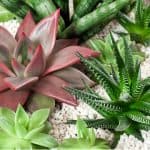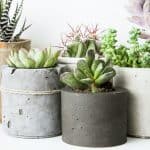Last updated on March 26th, 2022
Our site is reader supported, this means we may earn a small commission from Amazon and other affiliates when you buy through links on our site.
Succulents offer a unique addition to any garden or home with fleshy, bright green leaves and a unique texture that no other plant affords. That being said, there are literally thousands of succulent varieties out there, the most popular of which include sedums, sempervivum, agaves, and aeoniums. No matter the variety, succulents are grown typically in containers for their foliage and not for their flowers although some of the hardy rockery varieties do produce stunning flowers too. In fact, most people prefer growing succulents because of how easily they cope with drought, and the versatility they afford being popularly cultivated indoors or outdoors.
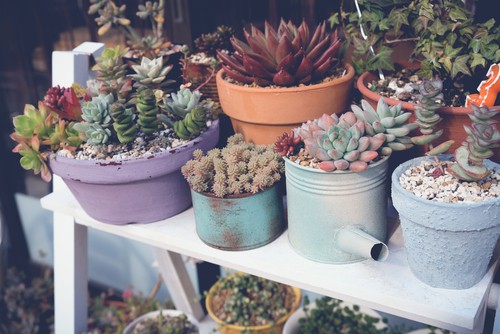
Where to grow your succulents
Succulents, whether grown indoors or outdoors, thrive in well-drained soil and sunny spots. The fleshy leaves on succulents store water, which is what enables them to survive long months of drought. Seeing as they do typically grow in desert areas, they prefer slightly acidic soil and will not do well in heavy soil, that being said, they will thrive in well-drained soils when planted in the ground or in normal potting compost mixed with grit for improved drainage if grown in containers.
Succulents, being native to warmer areas, do not survive cold wet winters very well and for that reason, most people who grow them in the UK grow the more tender varieties indoors and at the very least, grow hardier varieties in containers so that they can be moved indoors over winter or into a more sheltered area of the garden or cold greenhouse.
If you choose to cultivate more hardy types of succulents in containers, you can move the containers to a frost-free, well-lit area when autumn rolls around and keep them there until spring when the weather improves.
If you want to grow them indoors, they do best if they are on a windowsill that faces south or south east because they prefer plenty of light.
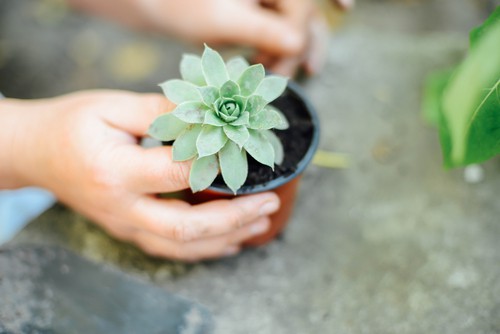
How to plant your succulents
Mix in plenty of horticultural grit to the soil and to the bottom of the pot
Before you plant your succulents, either in the ground or in a container, you want to help improve the drainage. You can add plenty of horticultural grit to the bottom of the pot and into the compost to improve drainage. If you grow them in the ground mix in plenty of grit to the soil. When you plant your new succulent make sure to avoid burying it too deeply because if the leaves come into contact with the soil they will rot so you never want to plant your succulent deeper than it was in its original container.
Planting in pots
If you are planting in a container, you want something that has optimum drainage, for example, terracotta pots. Unglazed terracotta pots get very warm in the sun which is perfect for these plants. Most succulents have incredibly fibrous roots so they do well in shallow pots. You can grow your succulents in a relatively small container or plant many succulents into a shallow trough or pot.
Planting the bigger Agave varieties
You should plant a large Agave variety in soil-based compost. The reason for this is that the soil-based compost is heavier and it will help anchor the larger roots of the bigger succulent. Be aware of the fact that Agaves have very sharp spikes so you will want to wear gloves and always be on the lookout to avoid these spikes. Nothing is more frustrating and painful than accidentally pressing into a spike.
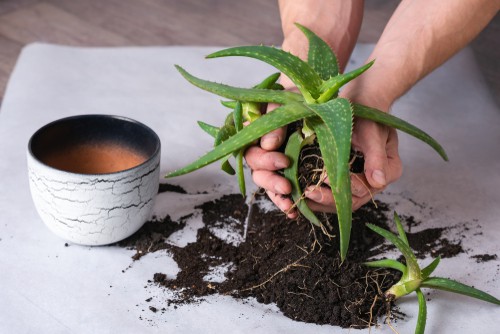
Propagating your succulent
If you have a succulent that you are particularly fond of and it is doing quite well, you might consider growing more of them, and you will be pleased to know you can propagate from the plant you have. One way is to collect seeds from the flowers. The other way, preferred by most succulent owners is to take a cutting from the succulent and simply re-pot it.
Most of the smaller succulents (like sempervivum) produce tiny baby plants called offsets. You can literally snip off one of these offsets and pot it, thereby propagating as many offsets as you can get your hands on.
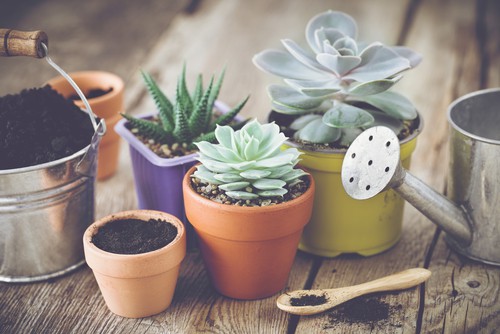
Succulent care
Watering
In the summer water your succulents (in containers) once per week. It’s better for the plant if you water slightly less often but give it a larger watering when you water, rather than watering sparingly but on a more regular basis. Once autumn and winter roll around you can reduce your watering and dramatically and move your container-grown plants indoors or to a sheltered area that is free from frost but has good access to light.
You can learn more about overwintering succulents in our guide by clicking here
Repotting if needed or refresh the compost
Every spring you should re-pot your potted specimens, or at the very least leave them in the same pot but change out the compost by removing it and repotting with new compost in the same pot.
Tidying up the dead leaves
You won’t need to do any pruning, unless of course you see damaged or dead foliage, in which case you can carefully peel it off of the plant.
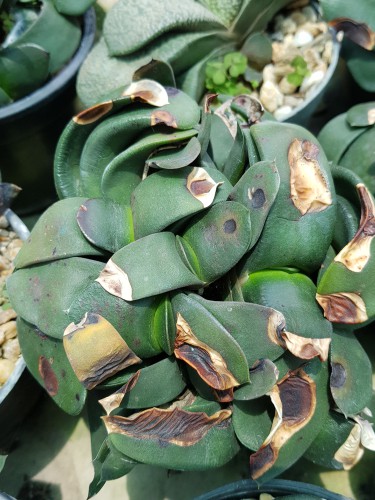
Pests
If growing succulents in a container, vine weevils are a common problem to look out for. They like to eat the foliage but their grubs can do more damage to the roots. You can see their handywork when examining the leaves and if you see small notches taken out the of leaves, you might have vine weevils.
Unfortunately, the adults aren’t the only problem. It is the grubs that grow in the ground that cause the most damage because they eat the roots of your succulent and this can lead to the death of the plant. If you see any grubs you should quarantine the plant or throw it out and start over.
You can buy a pesticide called Provado Vine Weevil Killer by Bayer Garden and you can use this as a drench to soak the soil and kill the grubs and adults.
One important factor when growing succulents is overwintering. Read our guide by clicking here.
Popular Varieties
Agave Americana Mediopicta
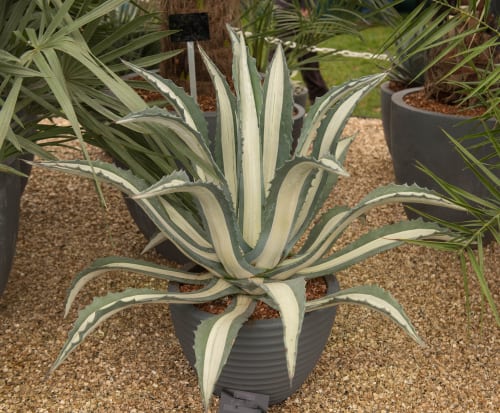
Some of the most popular varieties for ground growing include the Agave Americana Mediopicta. This is a stemless succulent that will last for about 30 years. At full maturity, it will reach one metre in height and produce large rosettes of sharply pointed leaves.
Aeonian Zwartkop
Equally as large and popular is the Aeonian Zwartkop which produces yellow flowers in the spring complimented by maroon rosettes with evergreen foliage. This plant also reaches about one metre in height after several years of cultivation.
Echeveria Compton Carousel
For something much smaller you can choose the Compton Carousel that produces red and yellow flowers throughout the summer and doesn’t reach a height above 15cm so it’s much easier to grow in a small container, inside.
Hylotelephium telephium ‘Purple Emperor’
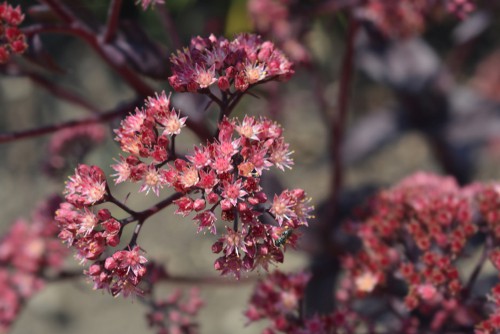
Slightly larger but still on the small side is the purple Emperor that does well in sunny, well-drained areas and produces dark maroon foliage, with pink clusters of flowers in the summer. At full maturity will reach about 40cm in height.
Aloe Vera
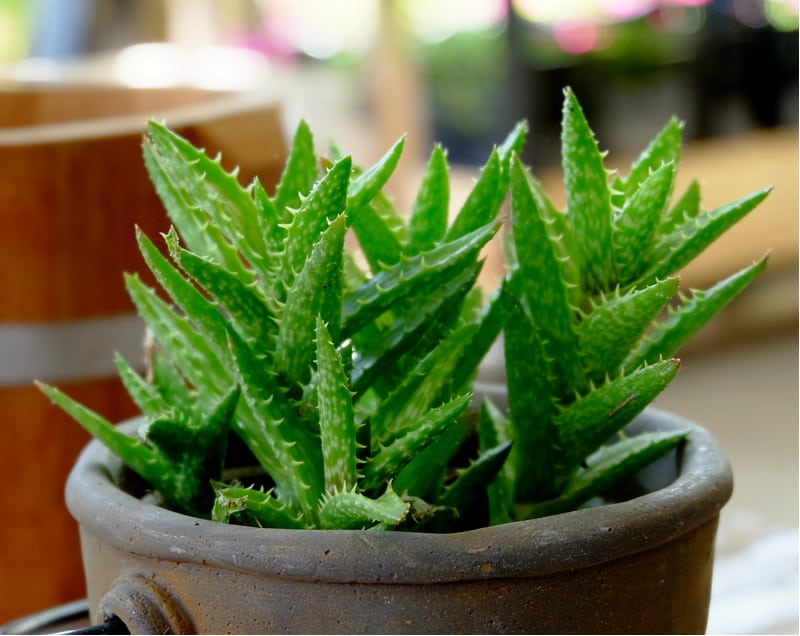
Slightly larger still is the Aloe Vera perennial houseplant that can reach up to 60cm.
Just getting started growing succulents? Read our article on our top 6 succulents for beginners.
Overall, there are plenty of wonderful succulents you can cultivate outside in your garden, in containers outside and then subsequently inside during winter, or inside all year round. Maintenance is generally the same no matter where you decide to grow them.

